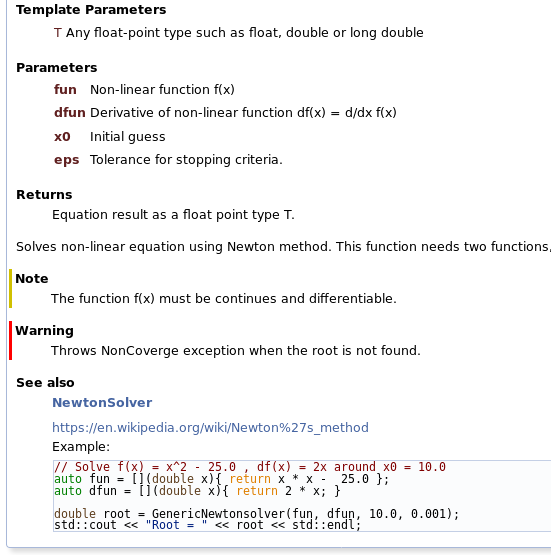

This would give a tutorial-like page that might be easier to read. Running Doxygen will extract these comments and create the documentation in a format defined in the. Doxygen is phrasing the code, extracting the commands together with subsequent text, and building documentation out of it.

If the examples are building on top of each other, maybe it also makes sense to create a dedicated page with the example code inlined, using the command: CustomExamplePage Custom list of examples You can add documentation tags as comments in your code. That references the examples in the order you wish. Then you could created a dedicated page SortedList Sorted list of example1.cpp Assume you have the two examples example1.cpp
Doxygen documentation example software#
It is used by a variety of software projects and if you. One workaround would be to build a dedicated page with the sorted list of examples yourselves. You can document most entities with doxygen in two ways: Special block near the definition Structural commands Special documentation block near the definition or declaration Write a special documentation block in front of the definition or declaration of the entity (member, class, namespace, etc) E.g: Document a function / brief Free an. Doxygen is a tool to generate documentations like the OpenCV documentation you are reading right now. Because each comment block in the example above contains a structural command, all the comment blocks could be moved to another location or input file (the source file for instance), without affecting the generated documentation. I guess since there isn't an easy way to define the relative order of blocks from different files, doxygen simply orders them lexicographical. Click here for the corresponding HTML documentation that is generated by doxygen. Doxygen scans all files for comment blocks and merges them to create the "special" examples page.


 0 kommentar(er)
0 kommentar(er)
